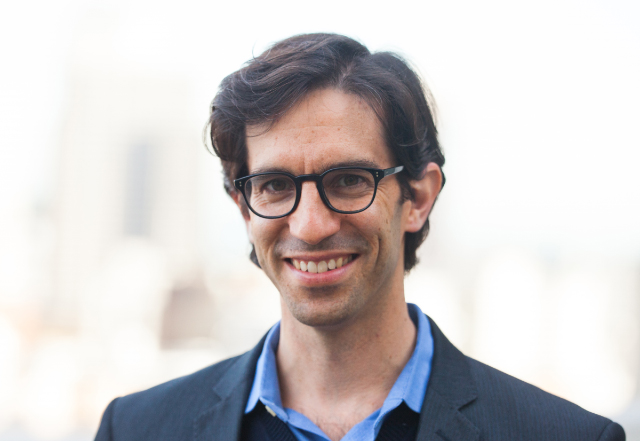Applied math alumnus uses data to make marketing more effective
The average American is exposed to somewhere between 3,000 and 20,000 brand messages each day, according to marketing research firm Media Dynamics, Inc. Amid all that noise, only about a dozen ads make an impact on each potential consumer.
But developing better advertisements is more than just a matter of finding cuter puppies to photograph or crafting more memorable catchphrases. Effective 21st century marketing is as much about big data as it is about big ideas, said Jeremy Lizt, A.B. ’97 (applied math), chief technology officer of San Francisco data onboarding company LiveRamp.
LiveRamp provides data connectivity tools that enable firms to effectively develop consumer-oriented messages and improve the targeting of advertising campaigns.
“Our vision is for every marketing interaction to be relevant for consumers,” Lizt said. “But the marketing industry is still very far from that ideal. A lot of people dislike advertising, and rightfully so, because most advertising is not useful and is just a distraction.”

Jeremy Lizt, A.B. '97, uses data to help make marketing more effective. (Photo provided by LiveRamp.)
To Lizt, one of the biggest problems with advertising is a lack of consistency that occurs when companies rely on data systems and marketing tools that aren’t integrated. Marketers running an advertising campaign might reach customers using a number of different digital channels, like website banner ads or paid social media, but to the consumer, those messages often seem disparate and impersonal.
LiveRamp’s data onboarding solutions take data that live offline, such as demographic information stored in a complex customer database, and integrate it into the marketing tools a firm is already using. Most companies possess large amounts of information on customers and potential customers, so by drawing on existing data a company can craft and send messages that are more relevant, Lizt explained.
“If these data can actually flow between these different tools, then a marketer can have a consistent and coherent interaction with a customer, which makes advertising a much more powerful experience,” he said.
But sifting through all that data and making it useful for a marketing team is no easy task. Many of LiveRamp’s customers perform tens of billions of interactions every day. Keeping up with such an enormous amount of information, and working efficiently on a massive scale, are the biggest challenges facing Lizt and his 50-person engineering team.
As emerging platforms, like smartwatches, provide companies new ways to interact with their customers, LiveRamp’s work will become even more complex, Lizt said. The company is striving to provide its clients with seamless connectivity across all platforms, so marketers communicate with the individual, despite the medium she or he may be using.
The rise of the “Internet of things” gives digital marketing the potential to be even more interactive and adaptive, but the industry still has a long way to go. Despite the growing array of new promotional channels and novel marketing mediums, Lizt actually hopes for a future with fewer ads.
“I think that we undervalue people’s attention,” he said. “We don’t know enough about the person or their time to effectively value it. Marketers would be willing to pay more for digital advertising if they had more confidence the ad would be relevant and could change the behavior of the consumer. We might receive a lot less advertising, but it would be infinitely more useful.”
This graph shows that, despite the fact that people spend much more time using different media, the number of ads that attract their attention (ads noted) has remained nearly flat. (Source: Media Dynamics Inc.)